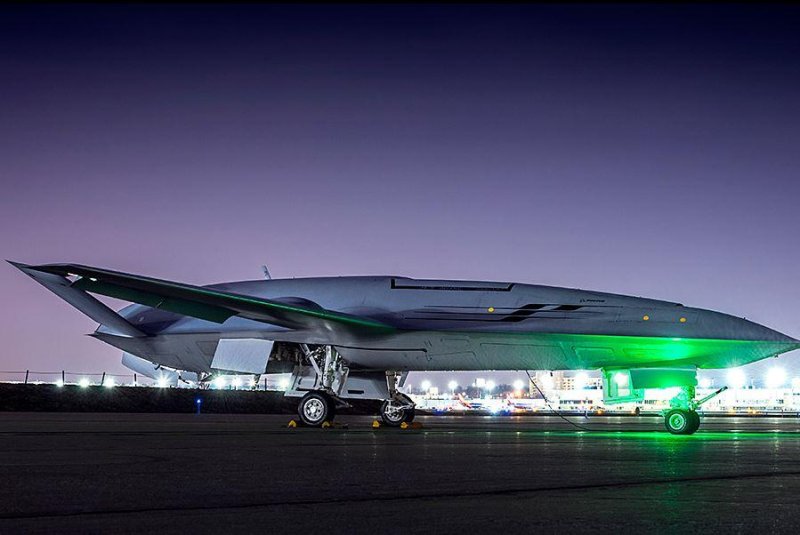BAE Systems' Vehicle Management Control Systems will control flight surfaces and perform management duties of Boeing's MQ-25 unmanned aircraft, BAE announced on Monday. Photo courtesy of Boeing Co.
June 17 (UPI) -- Boeing Co. selected BAE Systems to supply vehicle management systems for its MQ-25 unmanned aerial aircraft, BAE announced on Monday.
The contracts involve the plane's Vehicle Management Control System, which will control all flight surfaces and perform overall management duties of the plane, and the Identification Friend or Foe System, which identifies other aircraft and quickly establishes whether they are allies or enemies. The plane is the U.S. Navy's first operational carrier-based unmanned aircraft and is designed to provide a refueling capability. Boeing's $805 million agreement with the Navy calls for four MQ-25 aircraft to be delivered initial operational capability testing by 2024.
"The MQ-25 program is vital because it will help the U.S. Navy extend the range of the carrier air wing, and Boeing and our industry team is all-in on delivering this capability," said Dave Bujold, Boeing MQ-25 program director. "The work we're doing is also foundational for the future of Boeing."
The planes are drones, each the size of a fighter plane. They will not carry weapons but will be based on aircraft carriers to refuel other aircraft mid-flight, including the Boeing F/A-18 Super Hornet, Boeing EA-18G Growler and Lockheed Martin F-35C fighters. The Navy is upgrading four aircraft carriers with an Unmanned Carrier Aviation Mission Control System to accommodate the MQ-25s, with the USS George H.W. Bush expected to be the first carrier to be equipped with the UMCS.
A MQ-25A prototype, known as a T-1 or Stingray, is expected to take its first test flight by the end of the year. Built at Boeing's St. Louis facility, a prototype was taken to MidAmerica St. Louis Airport in Illinois, a small airport 40 miles away, in April. It will undergo taxiing tests there, and the Federal Aviation Administration must certify the aircraft and grant clear airspace for it to fly. Ground control stations are being installed at the airport, which is near Scott AFB in Illinois.















